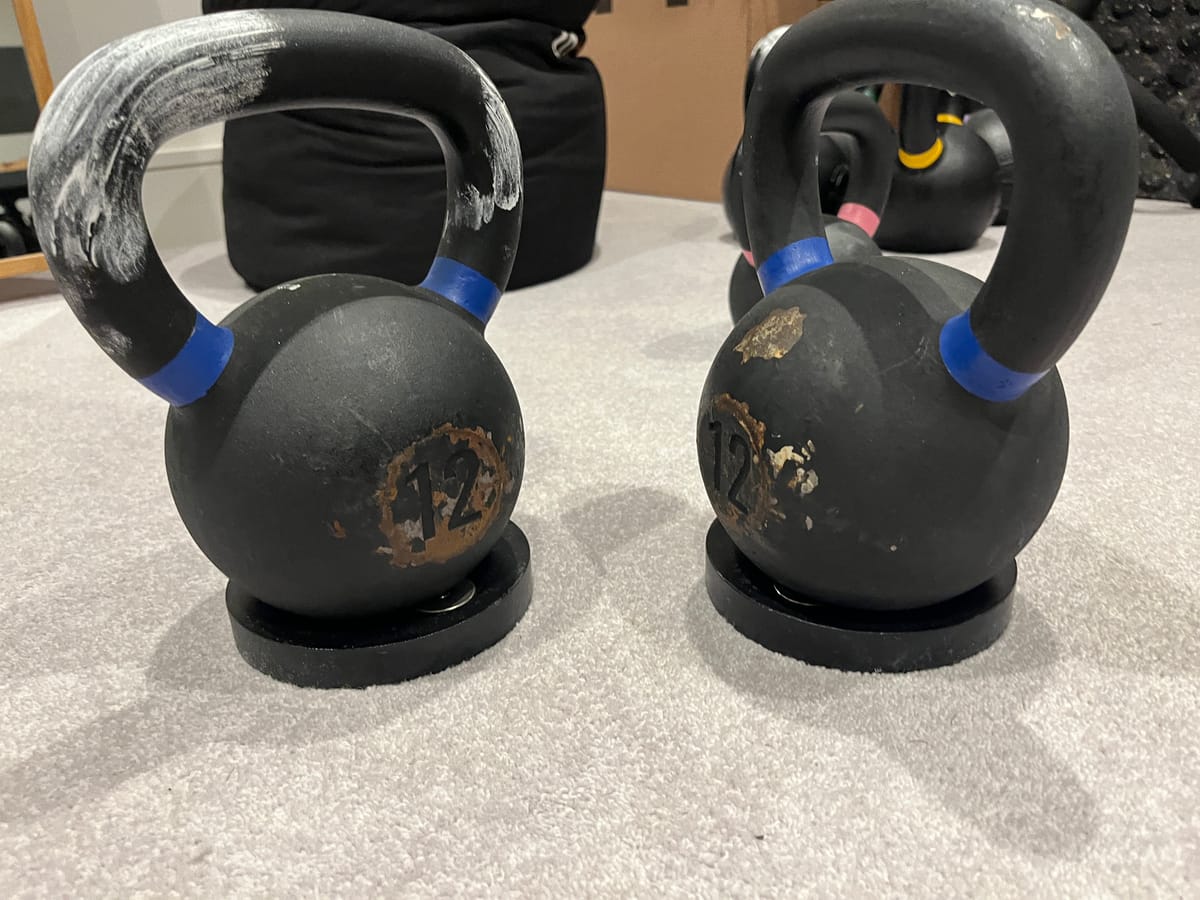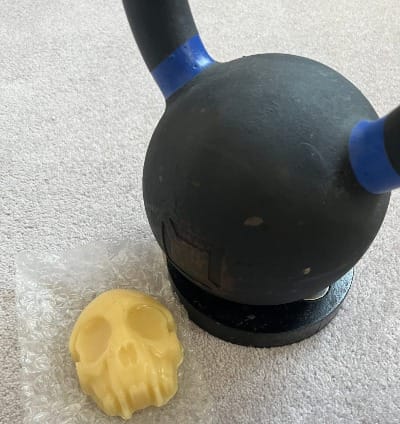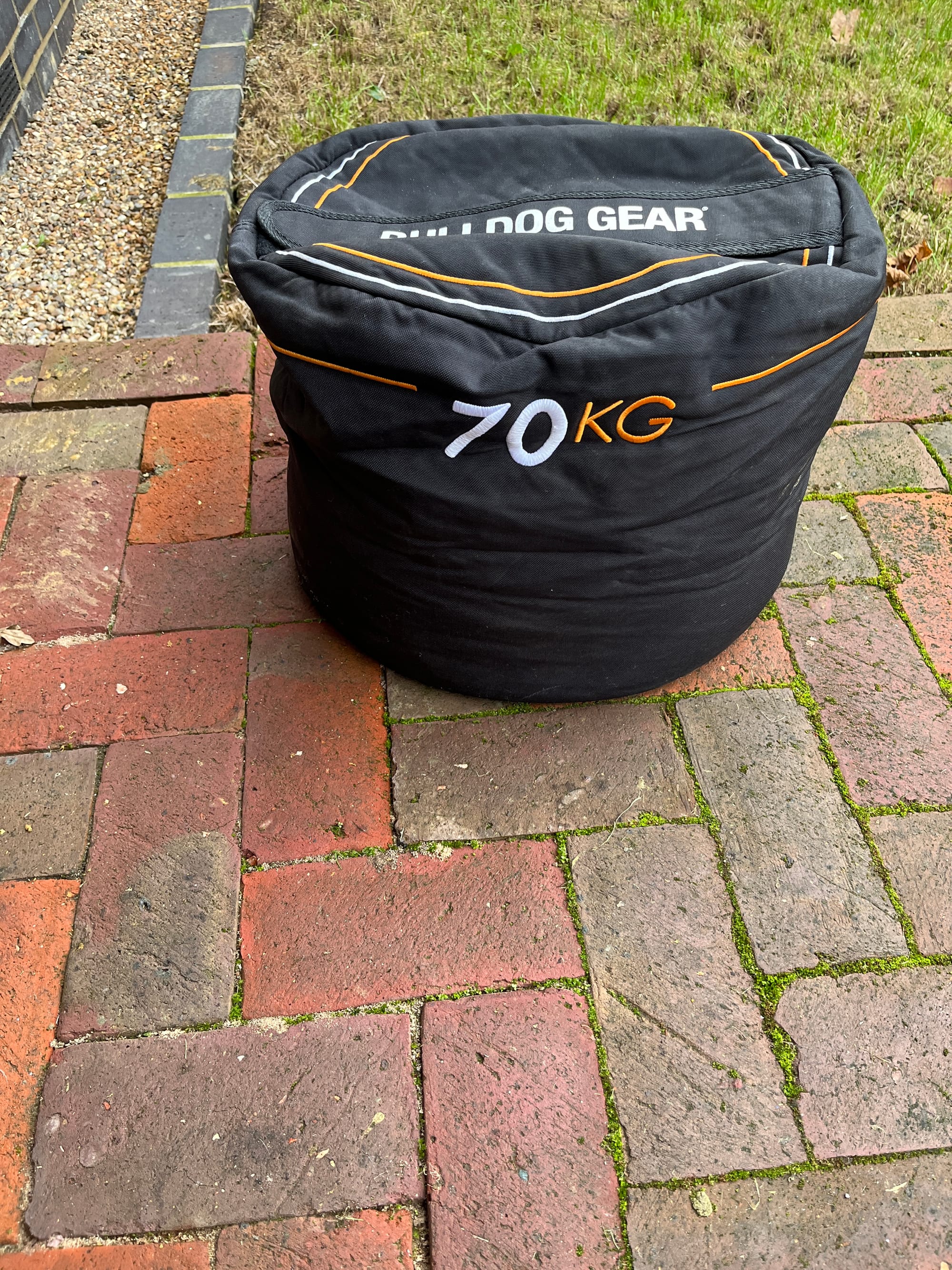Take Up Space
Move through fitness spaces with confidence—and build your own if you have to.

Hello and welcome to another episode in the series “Do you want muscles like C. L. Clark?” This one is about owning the spaces you move through so that you can build the muscles. This includes physical spaces primarily, but it is not the only space you need to manage, you dig?
As with all of these posts, I’m trusting you as a denizen of the internet to be able to use Google to look up workout plans and exercise techniques. I’ve provided links to get you started where I think they’ll be useful, but to define every eventuality for every person who comes across this post would be too much and well beyond my current capacity as “author who lifts”—I’ve retired from individual personal training, but I hope you’ll benefit from these posts nevertheless.
And finally, remember the brief—this is for building muscle like me. Though much applies to the general life of an exercising human, it’s mostly for people who want to…build muscle. All the tools are, of course, applicable for different exercise goals. But I’m not going into them.
In the Gym
One thing I hear from a lot of people is that they hate gyms. This is not entirely foreign to me. Though I love gyms and they’ve become a place of homecoming and familiarity, I understand that they can also feel like a gauntlet. Every time I step into a new one, I brace myself to spend too long looking for the right equipment; I readjust to whatever slightly different etiquette rules are in play; I start comparing myself to the other denizens, favorably or unfavorably, and I can feel my performance shifting before I’ve even picked up a weight.
It’s the wrong call, though. And it takes effort—god, it’s monumental sometimes—to shake all of that off and focus on your own plate.
I’ve made adjustments to my training life to deal with the worst of my gym feelings and to increase my best gym feelings.
- I pick exercises that don’t require a lot of equipment. If I can do a workout with just one piece of equipment, even better. But in a general commercial gym, I hang out with the “functional fitness” stuff: kettlebells, sandbags, TRX, maybe a sled if I don’t mind being a little more ostentatious.
- I am courteous about the space and equipment that I am taking up, which also means I must be flexible. If I need to use the sled and load it up with plates, I try to share the plates with the person trying to PR their deadlift, or share space on the pull-up bar.
- I make friends with the other
penitentsexercisers. This doesn’t [have to] mean we have long conversations about each other’s family’s, though we might evolve to that. It starts with just a respectful nod or polite exchange of equipment—“Hey, man, can I work in with you?” “Can I borrow that for a set?” And then, of course, there is consistency. We like people who are familiar to us; the more often we gymrats see people showing up, the more akin to us they feel. - Yes, there will be some dicks. Who don’t obey the rules, who do judge other people and don’t share equipment. Sometimes, you might even be one of them. The thing is—who are they to you? What can they do to you? What do their small thoughts matter? They don’t impact the actions you came to do. You can get strong with or without their blessing.
- If I don’t know how to use a piece of equipment but I am curious or I need it for a plan I am following, I ASK. It’s okay to seem vulnerable, to not know what you’re doing. Talking to people is an important skill, especially in terms of communication to get your needs met. In all realms. I am a chronically shy person so if that’s your deal, I get it, but pony up.
At Home
I have also just…skipped the gym entirely. Not for any of the reasons above but because of cost or preference or schedule or location. You can do that, too. Nothing says that you MUST subject yourself to the scrutiny of the gym (though it does have helpful things for beginners like resistance machines).
Your home can also be a space that you claim. Until recently, I’ve lived mostly in apartments as an adult, so space was at a premium. Instead of deciding I didn’t have room to work out at home, I looked for solutions that worked with what I had. Some of the things that worked for me are below.
Bodyweight
What it says on the tin. I think you can get a lot of mileage out of it, and many workout programs I’ve used incorporate bodyweight as one of the main things—p90x3, and the TRX for example.
TRX
My favorite at-home tool that I recommend for beginners is a TRX. Scalable, functional, packable, I like it more than most hotel gyms when I travel unless I need some serious resistance (which I usually don’t). It was my only gym for years, and you can adapt a lot of fitness programs to it if you are creative. (When I lived in Taiwan, I did p90x3 year round with only my TRX straps.) So you will definitely get your money’s worth. It’s gotten me in mad shape at various times in my life, and it comes with workout programs. I recommend the TRX Force app to go with it.
Adjustable Dumbbells
In grad school, I also had great success adding a couple of adjustable dumbbells to the TRX setup. That’s how I started p90x3. The cheap iron spin-lock style, picked up off craigslist (that’s how I recommend you start building your gym). And a door-hanging pull-up bar. Cheaper introductory cost than a TRX. If you have a little more cash, look for a quicker kind of adjustment mechanism, like the PowerBlock. I did well for a time with the 45lb/22kg (total weight) sets that I had, though I did have to make adjustments to scale difficulty up as time progressed. If you are already pretty strong or you just want to buy ‘em one time only with room to grow (hey, that can be a pretty good motivational tactic), get one of the heavier sets (i.e. 100lb/50kg total weight).
Enter the Kettlebell (and Sandbags)


If you stick around here long enough, you’ll know this is where I mostly hang out these days. I love my kettlebells and they proliferate like tribbles.
Though I love them and think they have the simplest plans of all, I don’t have them as my ‘beginner recs’ because they are best utilised with movements like the KB swing and snatch and clean and get-up, all of which are quite technical exercises and hard to learn without a coach unless you have really great body awareness already. Generally, I prefer Bulldog Gear for my ‘bells and ‘bags, but you can use whatever gets it done. If you can afford it, though, I recommend cast iron or competition style ‘bells over plastic.
To learn more about their use, you can look up Pavel Tsatsouline on youtube, or any of the other practitioners I’ve mentioned.
Sandbags are really fun, but you need space for them, and ideally somewhere to drop them without pissing off a neighbor, so they aren’t the best for apartment dwellers. (It was the first thing I bought in anticipation of buying a house.) I love them because they help me build raw, unvarnished strength in weird positions. Practical pick-up-a-person kind of strength. For whatever reason you might need it. Ahem.
Outside!!!
Just get outside! Go for a walk, a run, a hike, a bike ride, a skate. Go to a park with a gym if you’re lucky enough (see above and below for dealing with being perceived).

In Your MIND!
Ultimately, the space you really have to take up is in your head. Own your desires to be a person who strength trains, a person who builds muscle. Banish the doubt and the excuses that crowd out the work you have to do. Find a path and walk down it. You will be walking for a long time. Let it go from being something that you do to being part of who you are. It doesn’t have to be a large part—you don’t have to start filming your workouts and becoming a fitness influencer just because you have a bump in your biceps or you can see your abs.
It’s especially important to be aware of the identity you carry. When you say to yourself and more importantly, to other people, “I am someone who ___” or “I can’t ___” or “I don’t ___”—what are you reinforcing? For me, I am someone who works out. That means, even when I’m injured, even when work gets wild, I find a way to keep active, making whatever adjustments I need to—even small workouts count. I don’t spend all the space in my head saying all the reasons I can’t do the things I want to do. “Black people don’t trail run,” “I’ve always hated running,” “I don’t do upper body work because I have a chronic shoulder injury.” Nope. So, pay attention to what’s taking the space upstairs.
It can also help to find a community of like-minded souls, like any difficult endeavor. If you can find communities of butches or mascs trying to get arms like Vi or Sevika from Arcane, you can use each other for inspiration and commiseration. I will simply caution you to beware that you do not use them as competition. Do not bludgeon yourself with other people’s success. Hard to do, I know. And do not let other people’s hang-ups and biases become yours. This includes coaches! They can be the worst about this because you think they are role models but they are flawed and obsessing over the same insecurities you are! We all come into this game with baggage and are at different points of working it out. (Some coaches who are great at figuring this out? Meredith and Alex from Team Tactic.)
On the flip side, if you are so afraid to be perceived that it stops you from living your life, you have things to work through. Taking baby steps in the gym could help that, but you may also need to seek professional guidance, which this is not.
However, I firmly believe the only way to build confidence is by doing. If you do and fail, you will see that failure did not kill you, and you can try again, perhaps in a different way. If you do and succeed, you will see that you did the thing and can try doing more. Baby steps.
This is about strength training, and it is not about strength training.
TL;DR
Take up space. Your body is a tool. The gym is a tool. Your mind is a tool. Don’t let fear stop you from using the tools you need. Learn them—seek instruction, or get friendly with google.

